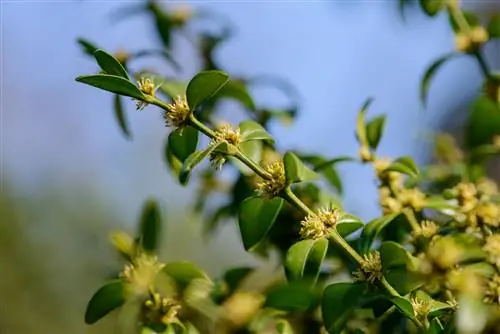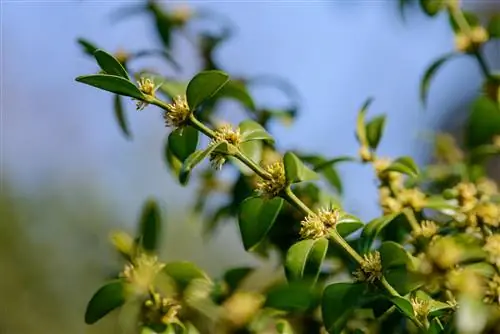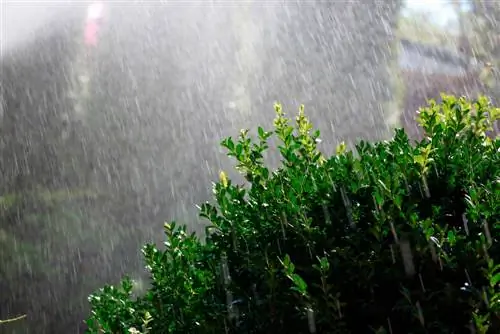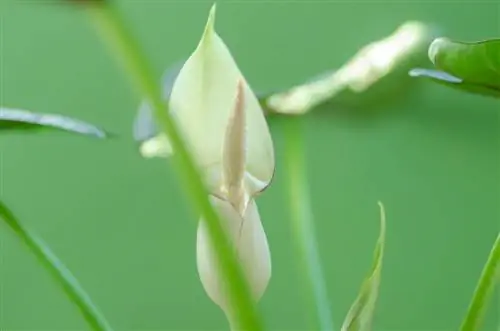- Author admin [email protected].
- Public 2023-12-16 16:46.
- Last modified 2025-01-23 11:19.
The boxwood can actually bloom if you let it. Since the evergreen shrub produces abundant toxic substances, some attention should be paid to the pollen. Because while you can keep your distance from other parts of the plant, it flies through the air as light as a feather.

What role does boxwood pollen play?
All parts of the boxwood are poisonous, so you should also be careful with its yellow pollen. It is produced abundantly and is very fine. Some allergy sufferers may experience respiratory problems Fortunately, boxwoods rarely bloom because they are often cut back.
When and how does the boxwood bloom?
For the first ten years of growth, the boxwood does not bloom at all, it just grows. Only then can it bloom annually under ideal conditions, and for this it needs phosphorus in particular. However, a year with a lot of flowers and therefore also a lot of pollen is followed by a year with very few or no flowers at all.
- Flowering time depends on the weather
- runs roughly fromMarch to May
- Flowers aresmall, inconspicuous and yellow-green
- they appear as flower clusters in the leaf axils
- each flower cluster consists of one female and many male flowers
- male flowers each have four stamens
The flowers of the boxwood produce a lot of pollen, also called pollen because of its fineness.
What effects does boxwood pollen have?
People who are allergic to pollen could also show symptoms corresponding to the poisonous boxwood. First of allirritated nasal mucous membranes and asthmatic reactions Apart from that, the scent of the flowers is described very differently. Sometimes fragrant, sometimes resinous, but occasionally smelling of cat urine. So there are a few reasons to limit the abundance of flowers on the boxwood with a vigorous spring pruning or even to remove the boxwood from the garden or replant it further away.
Is the flowering boxwood insect-friendly?
The boxwood flowers, which are very rich in pollen and nectar, attract numerous insects, including butterflies, bees, bumblebees and some species of flies. Box tree pollen is also so valuable for local insects because it is available early in the year.
Tip
White flakes on shoot tips are not pollen
In spring, fine white flakes often appear on the shoot tips of the boxwood. These are neither flowers nor does it have to be a pest infestation. Mostly they are harmless, broken-open, fine shells in which young, tender leaves previously found protection.






